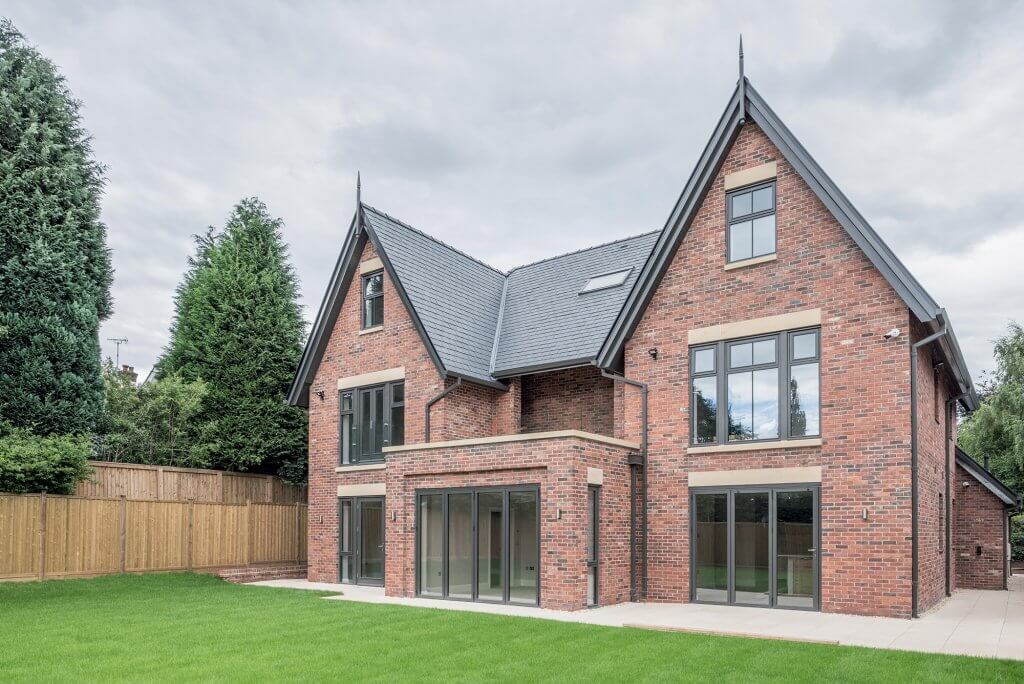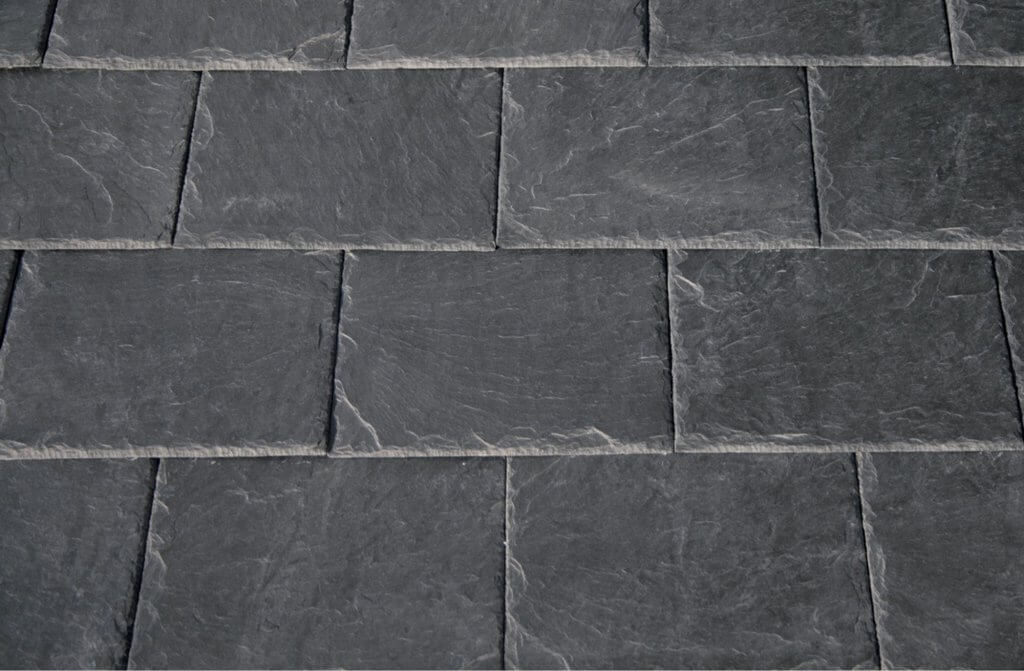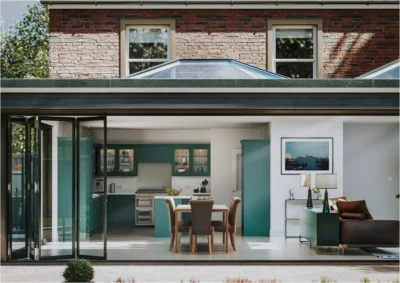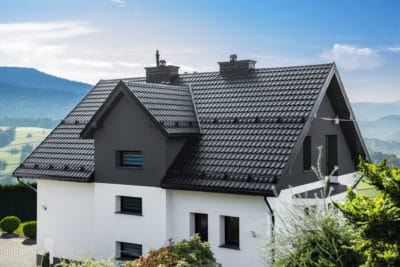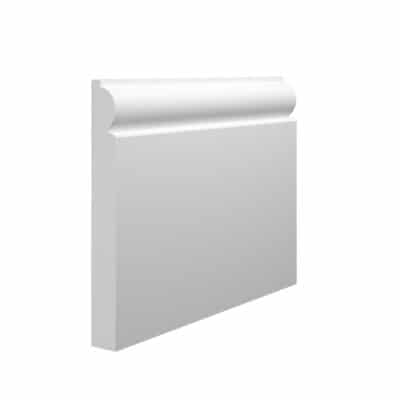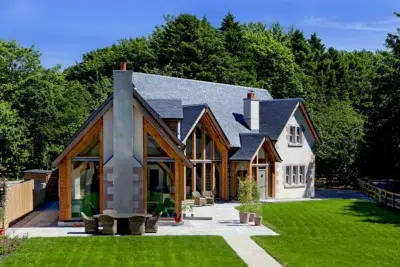The Benefits of a Slate Roof
Many areas of the country are synonymous with slate roofs – the Lake District, Cornwall and most of Wales are full of period homes where these handsome grey stone tiles are closely associated with the vernacular style.
It’s seen as a high-quality, timeless choice, and you may find that planners make it a condition of your house’s design that you specify slate, in order to fit in with what is used locally. However, this material is not restricted to traditional-looking properties: depending on the product, it can look crisp and modern, and be used as a cladding material as well as for roofing to achieve a seamless all-over appearance.
While UK quarries still exist, Spain has now emerged as the most prolific producer of roofing in this material. The country’s output accounts for 75% of global production of slate to be used for this application.
Material benefits
“Slate has many advantages over other roofing coverings, mainly due to the fact that it’s a natural stone product, giving it a unique and distinctive appearance. Slate tiles also offer more variety in size and thickness,” says Simon Braithwaite, category manager at Travis Perkins.
“It is also completely fireproof, making it one of the safest roofing options in the industry. “Most conventional solutions have a life expectancy of around 30 years, while slate products can last well over a century, making them an extremely durable and reliable solution. The only downside to investing in higher quality slate materials is that this is usually reflected in the price – but it’s worth investing in for the longevity.”
Source Cupa Pizarras slate roofing products from the Build It Directory
Slates are available in a variety of thicknesses, colour variations and textures, some of them intrinsically associated with certain geographical locations or styles. Shades of blue, green and plum add a tonal richness to the grey: Westmoreland slate is on the green side, for example, while Welsh slate from Penrhyn is famed for its blue hue.
Many products make a virtue of the stone’s distinctive riven surface grain, which together with subtle tonal variations help to create a pleasingly irregular roofing surface that simply cannot be replicated by synthetic alternatives.
Read more: How much can I expect to pay for a slate roof?
Quality product
Slate’s unimpeachable reputation has been damaged in recent years owing to an influx of poor-quality imports from places such as China. As with many building materials, cost is a reliable indicator of quality: cheaper goods will be softer and have less durability, leading to delamination of the layered composition.
“Good quality slate doesn’t change colour, fade or deteriorate over time,” says Dora Kotzeva of SSQ. Suppliers should be able to provide certification detailing records of origin for their products and the results of testing for key properties such as water absorption and resistance to pollution.
Slate alternativesFor many, natural slate will be the only choice, but it’s worth looking at synthetic versions. Concrete tiles used to be the only alternative, but their chunkier profile and uniform finish are not all that convincing, especially up close, and fading can be an issue. Fibre cement products such as Marley Eternit’s Rivendale (£1.67 per 600mm x 300mm tile, from Roofing Superstore) give a more authentic textured finish, with a thin, ragged leading edge that mimics the natural material. Synthetic slates are often quicker and easier to install: Eco Systems’ Eco Slate, made from recycled PET, can be affixed straight to ply boards or OSB (no battens required). Once laid, it bonds together naturally, aided by sunlight, to create a wind- and rain-proof system. It also incorporates UV inhibitors to prevent fading. |
Make sure the certificate is recent as a continuous cycle of testing is a sign of a reliable manufacturer. The relevant British Standard is BS 12326 but if you want the very best, Dora recommends looking out for products that have also passed the more rigorous French standard, NF228.
“We recommend that customers also request a rust-free guarantee (RFG),” says Dora. “As with every other stone, slate contains iron inclusions which could be stable or unstable, depending on the product’s quality.
“Unstable inclusions (pyrites) will, with time, leach and sometimes even make holes in the tile, causing a roof failure. Certain levels of leaching are allowed in the British Standard, so to provide a little extra assurance to customers we suggest looking for slate carrying an RFG.”
Design & installation
“The installation of a slate roof involves a number of aspects that must be considered in the design process,” says María Concepción Suárez Álvarez of Cupa Pizarras. “The most significant is the environment, with the two main factors being exposure to wind and rain.”
Smaller tiles are more suitable for steeper pitches, while lower pitches and more exposed sites will demand the use of wider units. The headlap (the size of the overlap between successive rows of tiles, which keeps the whole roof watertight) is also variable according to roof pitch and your dwelling’s level of exposure to the elements.
“The installation is as important as the product quality – slate can fail due to bad workmanship, and unlike manmade materials it has to be sorted and graded prior to fixing,” says Dora. “We recommend only experienced slate roofers carry out installations.” The tiles are affixed to battens using nails or hooks; the latter fitting should not be used on lower pitches.
Always allow for 5% more than you need to offset any breakages. Once installed, slate is extremely stable, but it is vulnerable to damage while it is in transit or being laid.
Top image: A summerhouse in Cheltenham by Jonathan Rhind Architects, with a slate roof made from SSQ’s Riverstone phyllite, known for its quality as well as its thickness (12-15mm), which gives it a rustic appearance.
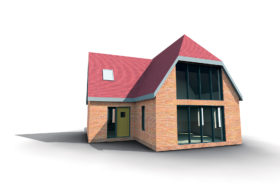
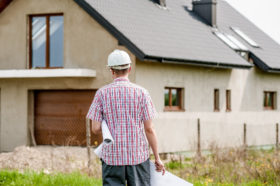






























































































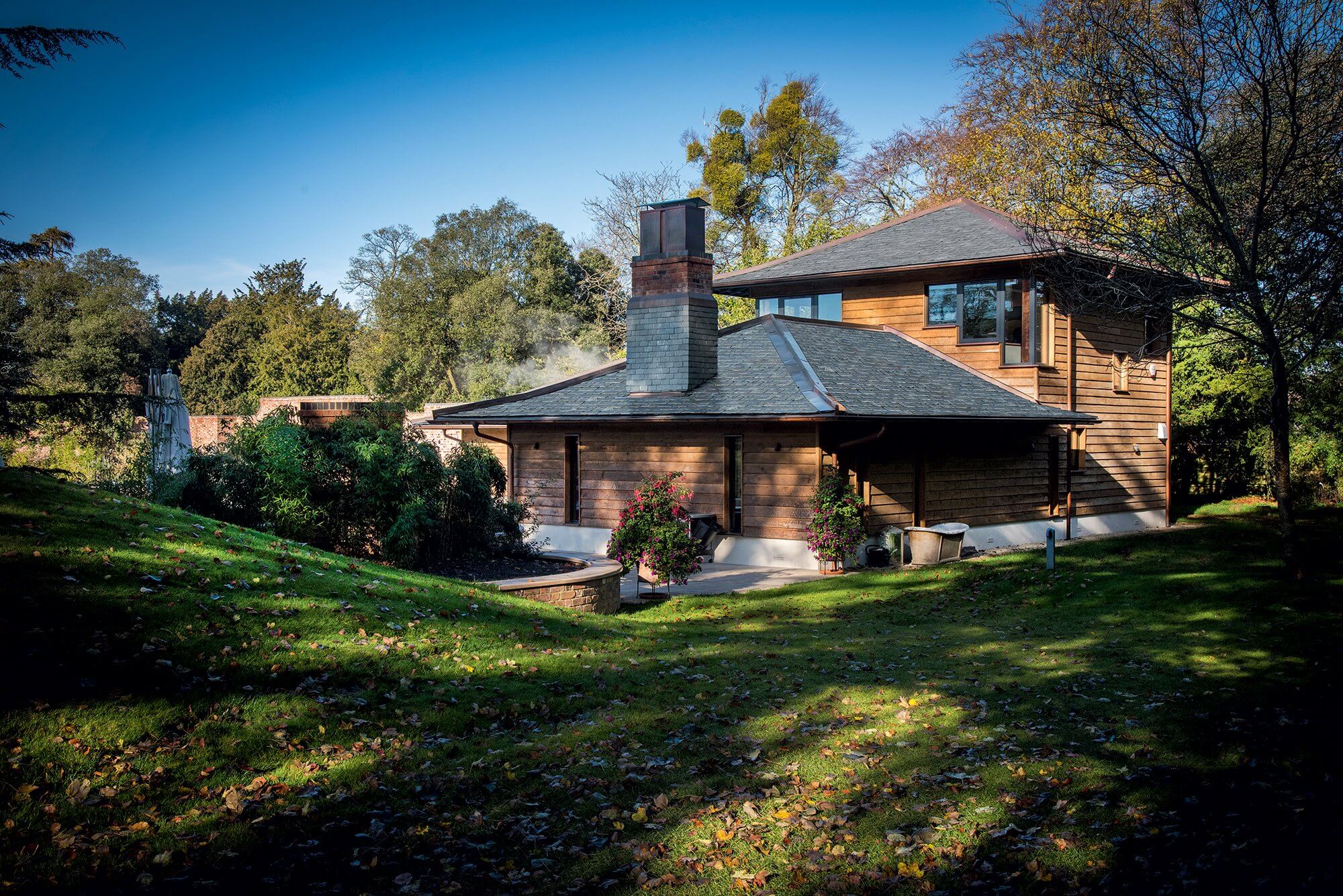
 Login/register to save Article for later
Login/register to save Article for later

